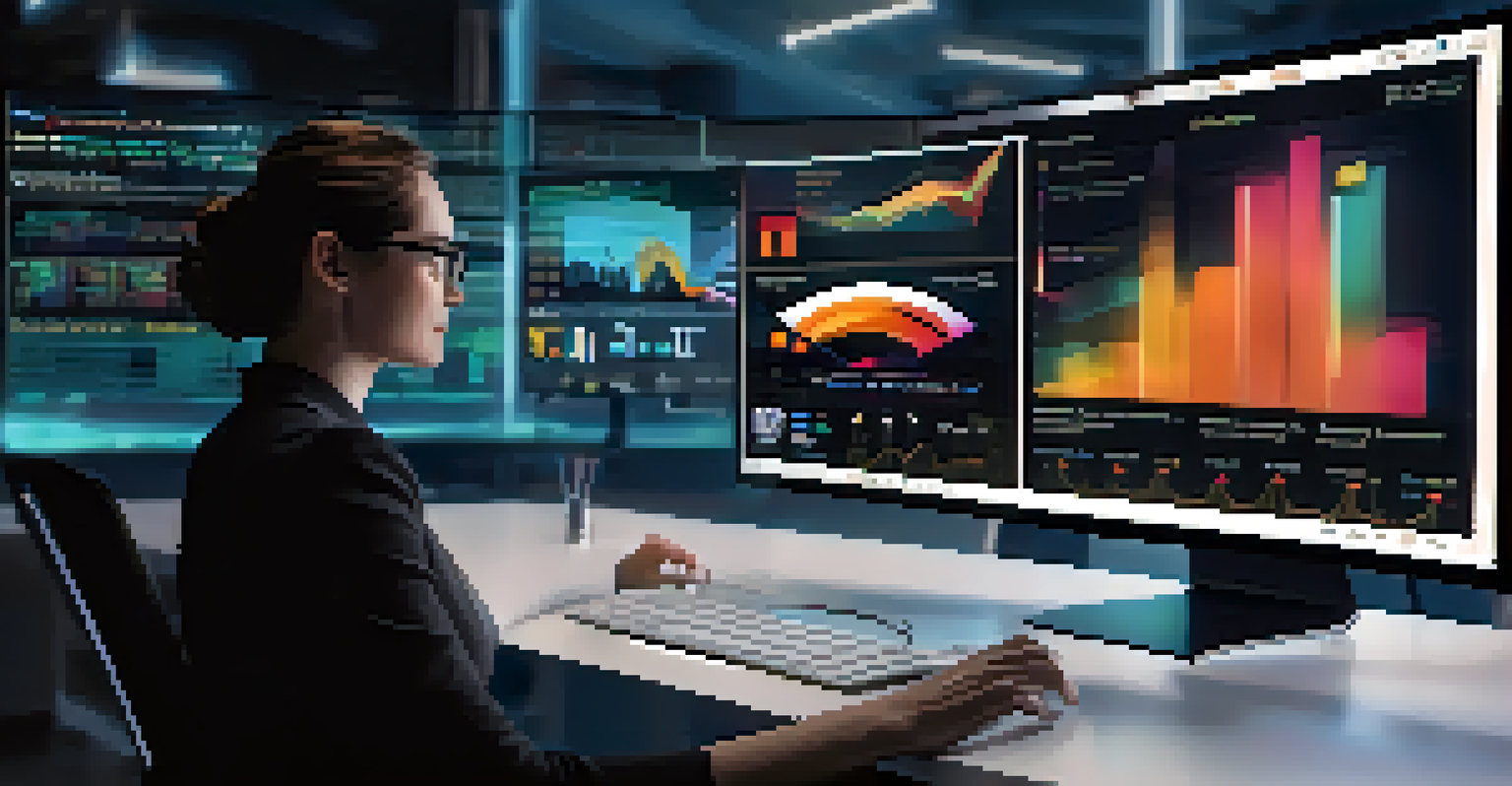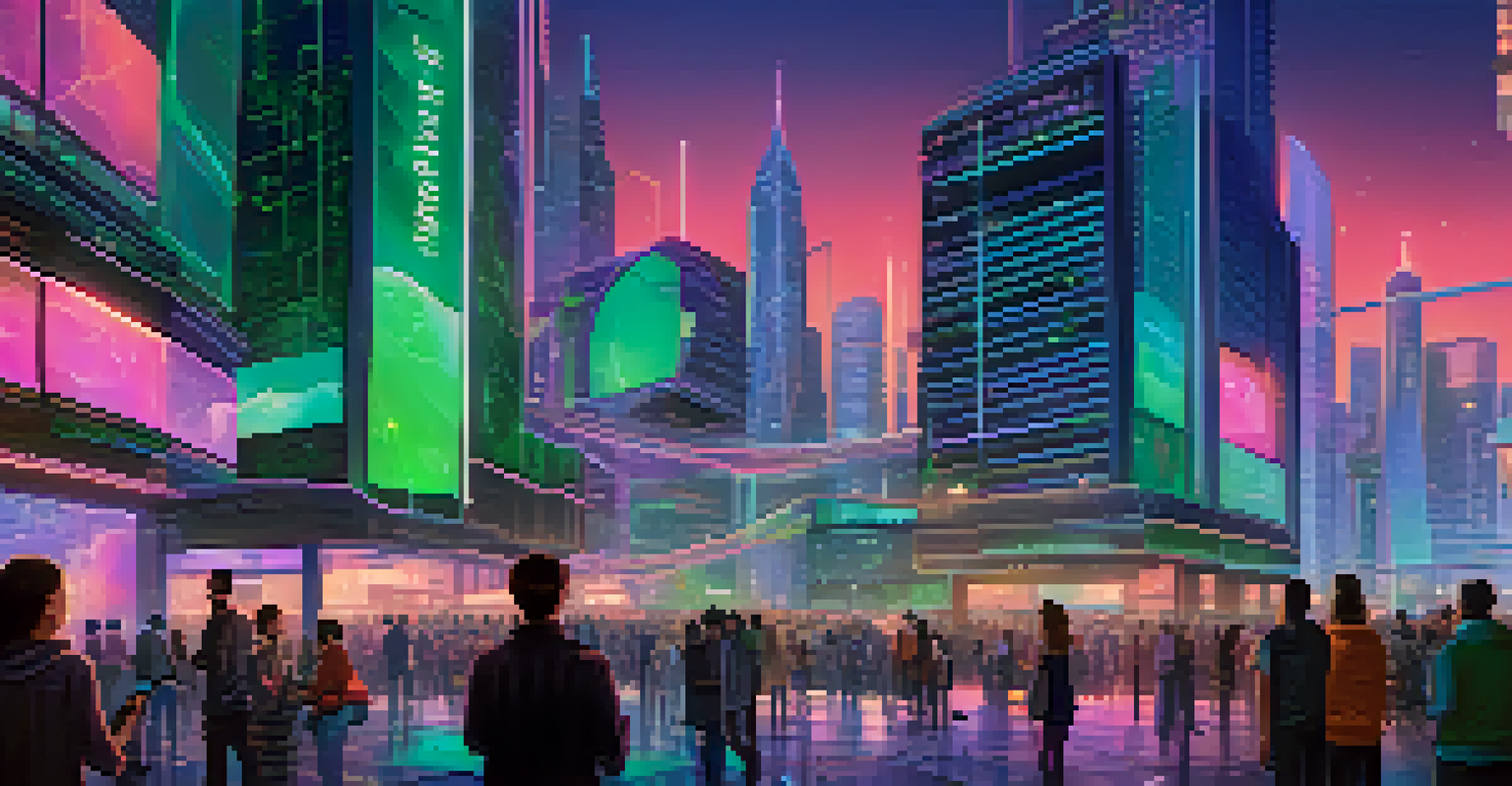The Intersection of Decentralized Applications and AI

Understanding Decentralized Applications (dApps)
Decentralized applications, or dApps, are software applications that run on a blockchain or peer-to-peer network rather than being hosted on centralized servers. This architecture enhances security and transparency since no single entity controls the application. Imagine a community garden where everyone contributes and benefits equally, rather than a single landlord controlling access and resources.
The great thing about decentralized applications is that they empower users by removing the middleman, creating a more direct and equitable relationship between participants.
dApps are designed to be open-source, allowing developers to collaborate and innovate without gatekeepers. This fosters a spirit of community and shared purpose, as anyone can contribute to the codebase or suggest improvements. Think of it as an open-source recipe book where chefs from around the world can add their twists and flavors to each dish.
With an array of use cases including finance, gaming, and social media, dApps are transforming industries by empowering users. They eliminate intermediaries, which not only reduces costs but also streamlines processes. In this way, dApps are like a fast-track lane for innovation, allowing ideas to flourish without bureaucratic delays.
The Rise of Artificial Intelligence (AI)
Artificial Intelligence (AI) refers to the simulation of human intelligence in machines programmed to think and learn. It encompasses various technologies, including machine learning, natural language processing, and computer vision, all aimed at enabling computers to perform tasks that typically require human cognition. Picture AI as a personal assistant that learns your preferences and helps you make decisions more efficiently.

AI has gained significant traction in recent years, thanks to advancements in computing power and the availability of vast amounts of data. This surge has led to innovative applications in sectors ranging from healthcare to entertainment. For instance, AI algorithms can analyze medical images to detect diseases faster than the human eye, showcasing its potential to save lives.
dApps Enhance Security and Transparency
Decentralized applications operate on blockchain technology, which improves security and transparency by eliminating single points of control.
Moreover, AI is reshaping how businesses operate by automating routine tasks and providing insights through data analysis. This not only boosts productivity but also allows employees to focus on more creative and strategic endeavors. Think of it as having a co-pilot who handles the navigation while you steer towards your destination.
How dApps and AI Complement Each Other
The intersection of dApps and AI presents exciting opportunities for innovation and efficiency. dApps provide a decentralized framework that enhances the security and reliability of AI applications, while AI can optimize the functionality of dApps by improving decision-making processes. Together, they create a synergistic relationship that can drive advancements in various fields.
Artificial Intelligence is the new electricity. Just as electricity transformed almost everything, AI will transform how we work and live.
For example, in the realm of finance, a dApp could leverage AI algorithms to analyze market trends and automate trading decisions based on real-time data. This combination not only increases the speed of transactions but also enhances accuracy, leading to more profitable outcomes for users. It's like having a savvy financial advisor who never sleeps and always stays updated on market shifts.
Additionally, the transparency of blockchain technology ensures that AI models can be audited and trusted, addressing concerns about bias and accountability. By making AI processes transparent, users can have more confidence in the systems they interact with, knowing that decision-making is not shrouded in mystery. In this way, the collaboration between dApps and AI fosters trust in an increasingly digital world.
Potential Use Cases of dApps and AI Integration
The integration of dApps and AI opens the door to numerous innovative use cases across various industries. For instance, in supply chain management, AI can analyze data to forecast demand while a dApp tracks the movement of goods on a decentralized ledger. This combination ensures transparency and efficiency, much like a well-orchestrated symphony where each musician plays their part seamlessly.
In healthcare, dApps can provide secure patient records while AI analyzes health data to offer personalized treatment plans. This not only enhances patient care but also empowers individuals with control over their own health information. Imagine a health app that not only tracks your fitness but also suggests tailored exercise regimes based on real-time analytics.
AI Optimizes dApp Functionality
Artificial intelligence can enhance the performance of dApps by improving decision-making processes and automating tasks.
Moreover, in the gaming industry, dApps can enable true ownership of in-game assets while AI enhances the gaming experience through adaptive learning. Players could own their unique items as NFTs (non-fungible tokens) while AI adjusts game difficulty based on individual skill levels. This creates a more engaging and rewarding environment for players, like a tailored adventure that evolves with them.
Challenges at the Intersection of dApps and AI
Despite the promising potential of combining dApps and AI, several challenges must be addressed. One significant concern is the scalability of decentralized networks, as they often struggle to handle large volumes of data and transactions efficiently. This can hinder the performance of AI applications that rely on real-time processing, much like trying to run a marathon on a crowded track.
Another challenge lies in ensuring data privacy and security, particularly when sensitive information is involved. While blockchain technology offers enhanced security, the integration of AI can introduce vulnerabilities if not managed correctly. It's crucial for developers to implement robust security measures to protect users' data, akin to building a strong fortress around valuable treasures.
Lastly, the need for interoperability between different dApps and AI systems poses a hurdle. For effective collaboration, these systems must communicate seamlessly, which often requires standardization and compatibility. Think of it as ensuring that different musical instruments can play in harmony to create a beautiful symphony.
The Future of dApps and AI: A Collaborative Vision
As we look ahead, the future of dApps and AI appears promising, with the potential for groundbreaking advancements. The growing interest in decentralized technologies and AI-driven applications indicates a shift towards more user-centric solutions. This shift is reminiscent of a new dawn, where innovation flourishes in an environment that values collaboration and transparency.
In the coming years, we can expect to see more sophisticated dApps integrating AI capabilities, leading to enhanced user experiences and improved decision-making. Industries will likely continue to explore this intersection, creating solutions that empower individuals and communities alike. Picture a world where technology works for the people, rather than the other way around.
Collaborative Future for Tech
The integration of dApps and AI fosters a collaborative environment that empowers users and drives innovation across various industries.
Ultimately, the successful integration of dApps and AI hinges on fostering collaboration among developers, researchers, and users. By working together, they can overcome challenges and unlock the full potential of these technologies. In this collaborative spirit, we can build a brighter future, one where innovation knows no bounds.
Conclusion: Embracing the Synergy of dApps and AI
In conclusion, the intersection of decentralized applications and artificial intelligence holds immense potential for shaping the future of technology. By harnessing the strengths of both, we can create systems that are more secure, efficient, and user-friendly. This synergy is like a powerful current that can propel us toward new horizons in innovation.
As we continue to explore this exciting frontier, it's essential to remain mindful of the challenges that lie ahead. By addressing these issues collaboratively, we can ensure that the integration of dApps and AI benefits everyone, paving the way for a more equitable digital landscape. It's a journey that requires commitment, creativity, and a shared vision for the future.

Ultimately, embracing the synergy of dApps and AI promises to unlock transformative possibilities across various sectors. Together, they can empower individuals, enhance experiences, and drive meaningful change in our world. As we navigate this evolving landscape, let’s stay curious and open to the opportunities that lie ahead.